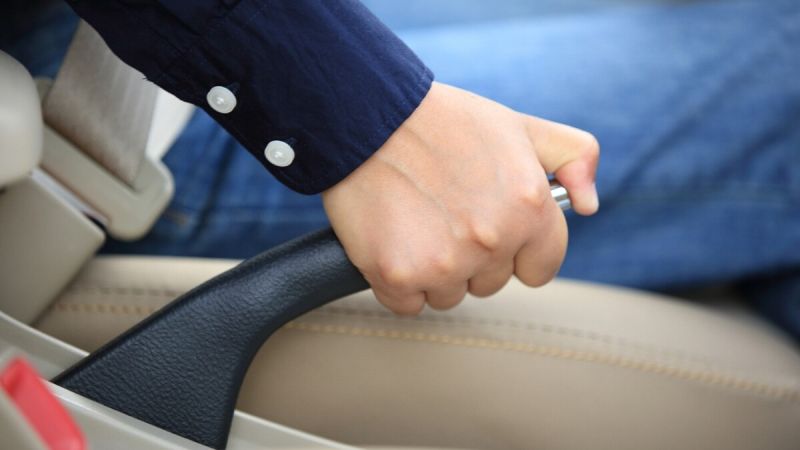One thing that makes a car DIY repair make you wish that you had decided to go to a garage rather than attempt the repair yourself is when frustration sets in after you discover that doing the repair is not as easy as you first thought it would be.
So, what is it that separates you from a mechanic who is essentially following the same steps in that car repair manual? Experience. Experience that reveals those simple tricks to make a tough job much easier and less likely wind up with a botched or unsuccessful repair.
Brake Repair Tricks of the Trade
A good example of this is a recent Wrenching with Kenny YouTube channel episode where the host reveals one of those slap-on-the-head tricks of the trade that leave you wondering why your car repair manual did not include it within the disassembly/reassembly instructions for a particular repair.
In this episode, Kenny points to the special case of when a brake caliper you are working on (for whatever reason) requires a full or partial disassembly step but has a self-adjusting brake cable attached to it under tension that is getting in the way.
Self-Adjusting Parking Brake Cable Basics
Chances are that if you own an older model car or are thinking of buying one, you will want to make sure that the little-respected, mechanically operated parking brake feature works as it should.
Parking brakes are an important safety feature to ensure that your car does not inadvertently roll such as:
- While changing a flat tire.
- While crawling underneath the vehicle to loosen the oil drain plug during an oil change.
- When the car slips out of gear while parked on a slope and your wheels are not turned against the curb.
Basically, the parking brake cable is a lifeline that pulls tightly against the parking brake system at a caliper to keep the brake pad or shoe engaged snugly against the brake disc or drum respectively to prevent the wheel from turning while parked.
Depending on the make and model of your vehicle, the parking brake is engaged via a pedal or hand brake that applies tension to the cable.
With the pedal-style you press down on the pedal until you feel the brake is engaged, and then press a second time afterward to engage an automatic release. For a hand brake, the same basic mechanics operate with a push of a button on the brake lever while pulling it back to engage the parking brake followed by pulling the lever back slightly afterward and pressing the button to release the lock while easing the lever forward to its disengaged position.
For analog style mechanical parking brake systems in older cars, a self-adjusting parking brake cable mechanism is designed to automatically adjust the tension in the parking brake system as the brake shoes (or pads) wear down over time from normal use. The beauty of the simplicity of this type of system is that it ensures that the parking brake remains effective as the brake shoes or brake pads undergo normal wear and tear.
This self-adjusting mechanism typically consists of a ratcheting mechanism that detects the change in tension or slack in the parking brake cable and thereby ensures that the parking brake maintains the proper level of tension when needed.
If you have ever accidentally driven a car with the parking brake on, the odds are you found taking off to be sluggish or strained and soon after detected an unpleasant odor as the pads or shoes began to burn away from the friction caused by an engaged parking brake. D’OH!
Self-Adjusting Parking Brake Cable Trick
Since a properly tensioned parking brake cable will always have just enough tension when disengaged to keep the connection taut but not overly tight, it can make disassembly of the caliper it is connected to, difficult, since it puts some pressure on the caliper.
Some manuals will describe a process of loosening a tension nut to relieve the pressure on the caliper, but this means you will have to re-tension the cable afterward, which is not always accurate to gauge by hand. Some manuals may skip this step by referring to only non-parking brake cable caliper instructions.
To help DIY types bypass the difficulties of working on a caliper with a self-adjusting parking brake cable attached, here is a demonstration of a simple vice grip trick that temporarily relieves the pressure of the parking brake cable on the caliper that makes what could be a challenging task much easier to do.
Self-Adjusting Parking Brake Cable Trick Makes Your Life Easier!!
For additional articles related to car repair tricks, here are a few for your consideration:
- Engine Removal, Without Removing the Hood on That GM
- Important Oil Filter Trick for Longer Engine Life
- Ford Repair with a Coat Hanger
Timothy Boyer is an automotive reporter based in Cincinnati. Experienced with early car restorations, he regularly restores older vehicles with engine modifications for improved performance. Follow Tim on Twitter at @TimBoyerWrites and Facebook for daily news and topics related to new and used cars and trucks.
COMING UP NEXT: Best New Car Deals for Memorial Day Spotlighted by Consumer Reports
Image source: Deposit Photos











